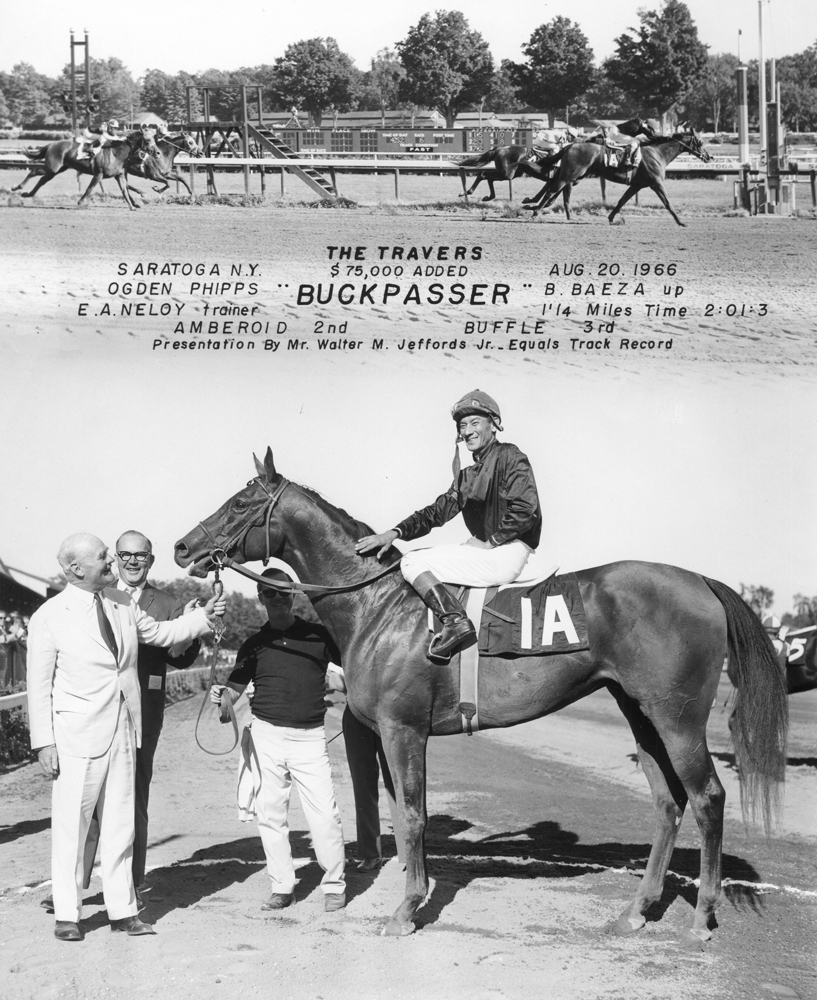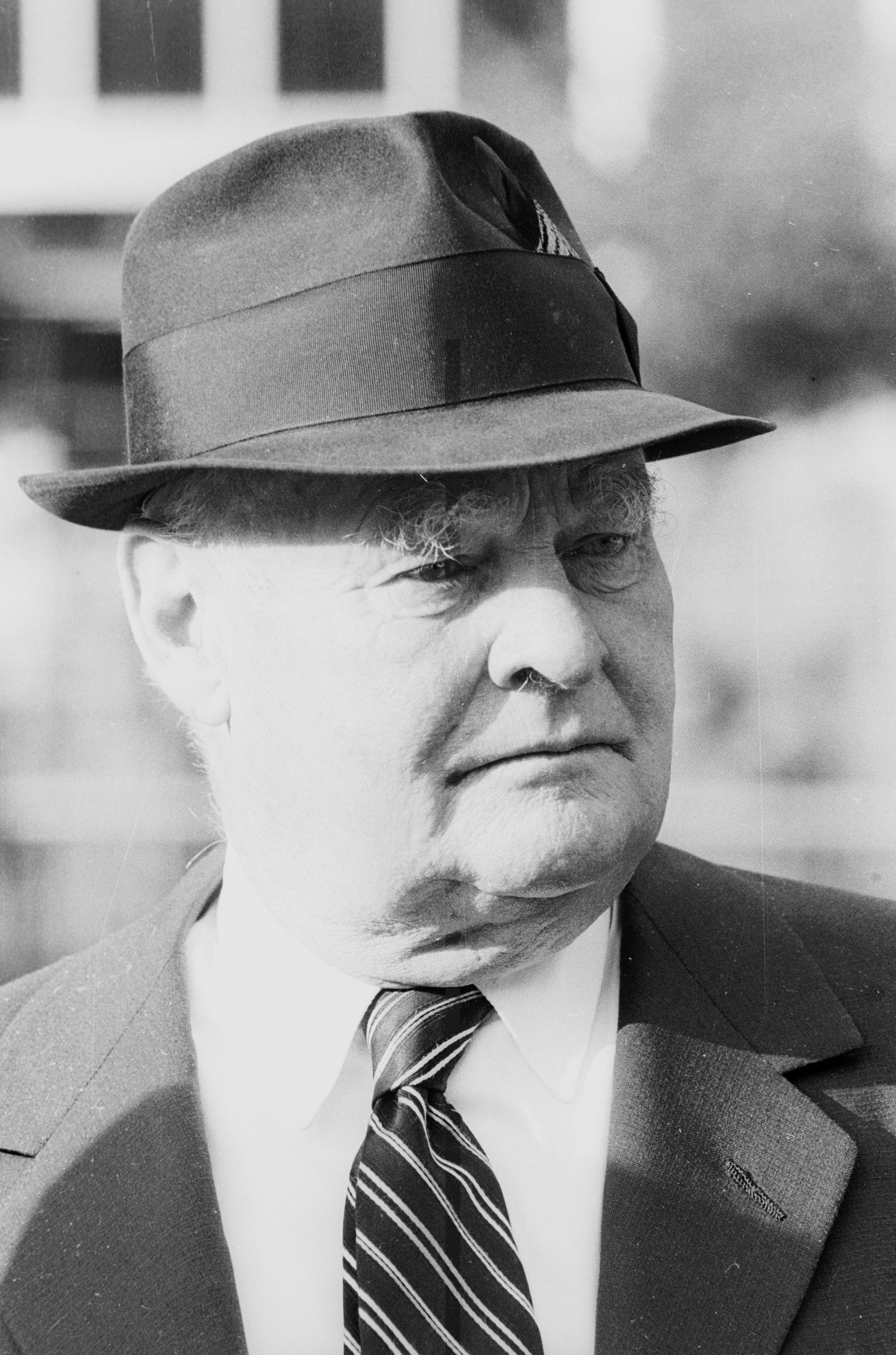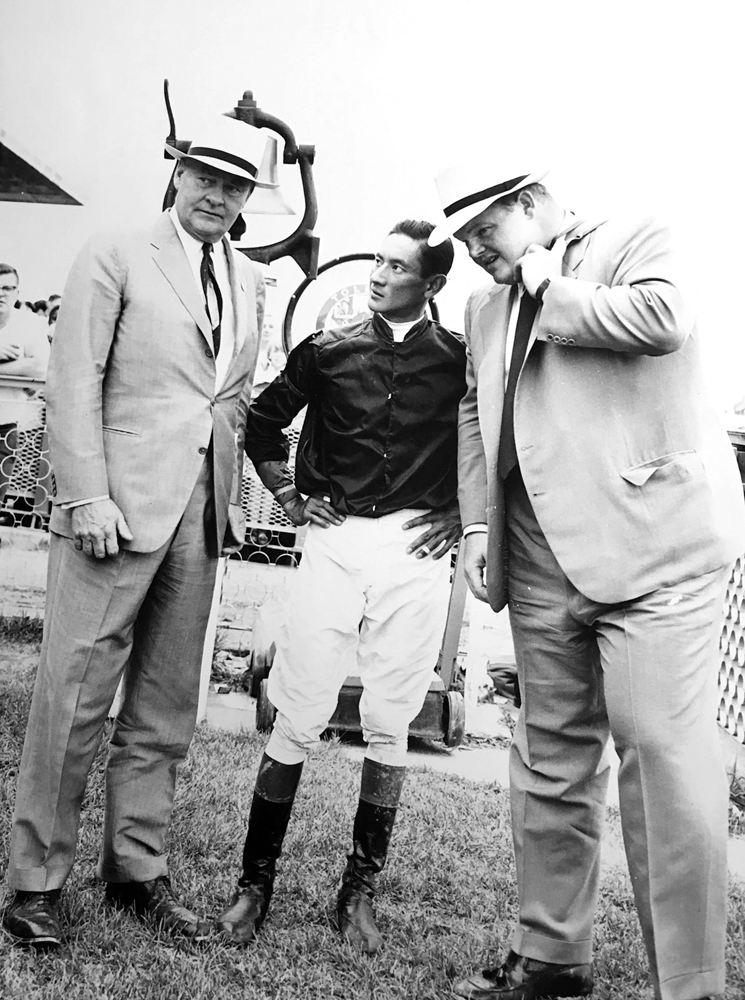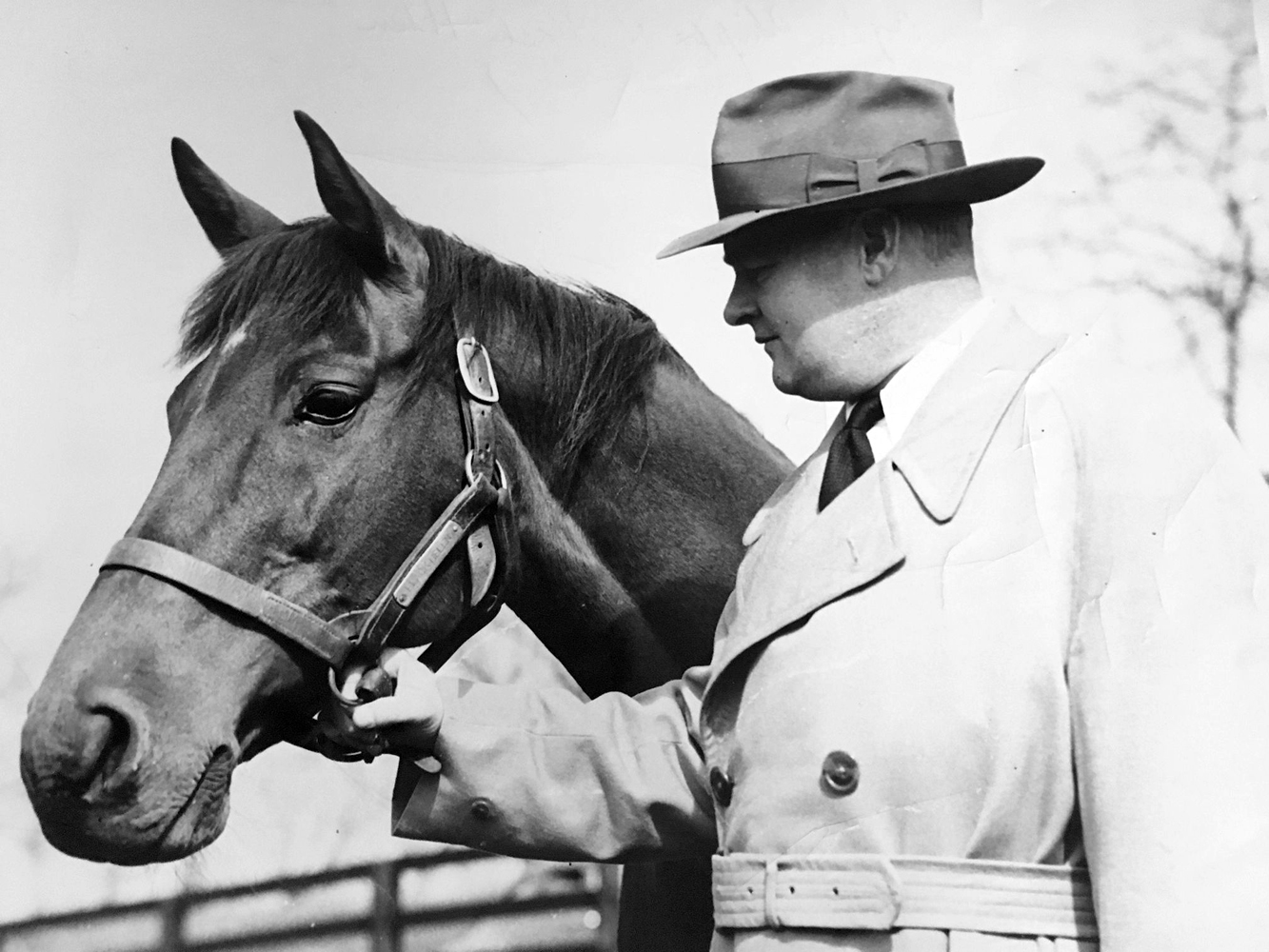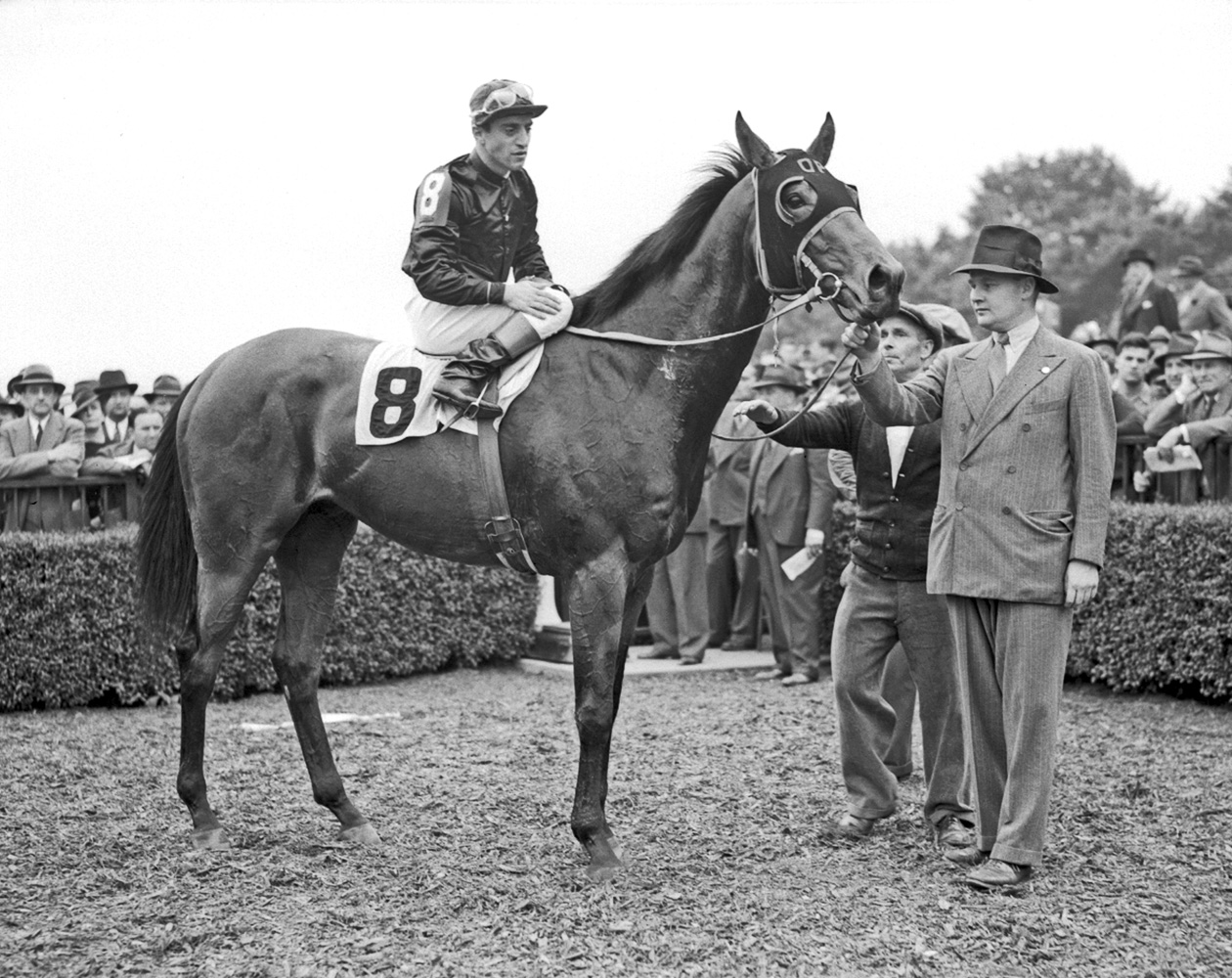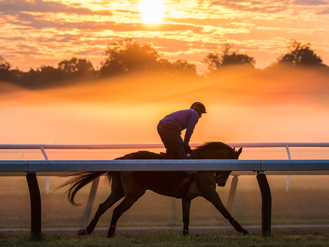Ogden Phipps
Ogden Phipps followed his mother, Gladys Mills Phipps, in establishing a thoroughbred racing stable, but it was a scenario far different from many generational baton handoffs. This was not a case of a young man observing a parent’s success for many years and then simply following the blueprint.
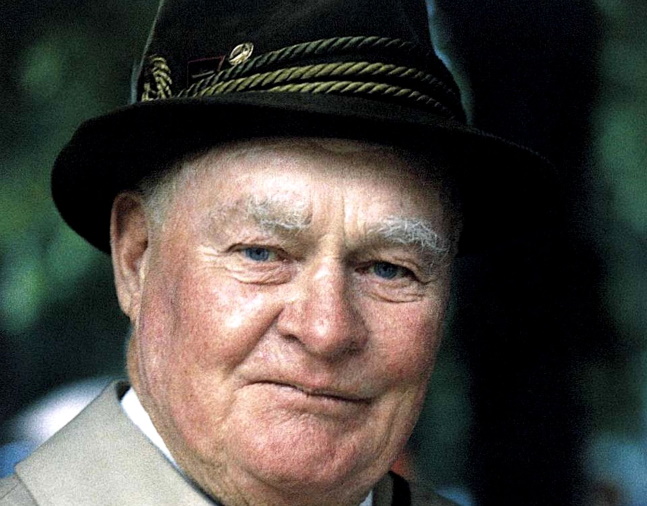
2019
Nov. 26, 1908, New York City, New York
April 21, 2002, West Palm Beach, Florida
Biography
Ogden Phipps followed his mother, Gladys Mills Phipps, in establishing a thoroughbred racing stable, but it was a scenario far different from many generational baton handoffs. This was not a case of a young man observing a parent’s success for many years and then simply following the blueprint.
Phipps was interested in racing early, and as he entered his 80s he looked back during an interview and conjectured that his own interest had been one of the influences which encouraged his mother to establish Wheatley Stable. Ogden Phipps registered his colors in 1932, less than a decade after his mother’s first yearling purchases. Phipps adopted the black silks and cherry cap of his grandfather, Ogden Mills, who had raced abroad.
Phipps had early success, winning the 1935 Youthful Stakes and 1936 Withers Stakes with homebred White Cockade. Any sense of being “off and running” as a breeder and owner, however, hit a major road block with World War II, as Phipps spent time in the Navy. As was true of many young men in his situation, he long looked back with a twinge of regret that he “never got overseas,” but Phipps was proficient enough in his assigned duties that he rose to the rank of Commander.
The bloodstock activities of Phipps were largely dormant during the war, but he did make a purchase in 1944 destined to benefit his racing fortunes through the rest of his life. He had observed that Col. E. R. Bradley’s wonderful mare La Troienne was crossing potently with Man o’ War’s Triple Crown-winning son War Admiral. Phipps managed to purchase one of La Troienne’s daughters, Big Hurry, and he sent her to War Admiral in 1945. The resulting foal could have been named for both his sire and his breeder, being registered simply as The Admiral. He duly followed White Cockade as the second stakes winner bred by Phipps.
The passing of Col. Bradley soon meant that a prized broodmare band was suddenly available. While such a situation today might be expected to result in a headline consignment at auction, in the prevailing situation of the time, young breeders made a different move. Robert Kleberg, Jr. of King Ranch approached Phipps with the idea of jointly purchasing the Bradley mares. Phipps was a house guest of John Hay Whitney of Greentree Stud at the time and asked that his host be invited to join the venture. A large draft of Bradley mares thus was purchased — and divvied up — by three aggressive young sportsmen, and the blood of La Troienne was beneficial to all three in the short, medium, and long term.
In the remaining years of the 1940s and through the 1950s, Phipps had successes with numerous stakes winners, many bearing the combination of War Admiral and La Troienne. The mid-1960s saw Phipps and his mother’s Wheatley operation treat top-level racing as a family matter, something to be split between them. Sunny Jim Fitzsimmons had been the trainer for both stables for many years but retired just before the Phipps domination of racing’s real-life Monopoly Board was commenced. Thus, Bill Winfrey and then Eddie Neloy trained during the remarkable pattern which included:
- 1964 Juvenile colt and Juvenile filly champions for Mrs. Phipps in Bold Lad and Queen Empress
- 1965 Juvenile colt champion Buckpassser for Ogden Phipps
- 1966 Juvenile colt champion Successor for Mrs. Phipps, but Horse of the Year and champion 3-year-old Buckpasser for Ogden Phipps
- 1967 Juvenile colt and Juvenile filly champions for Ogden Phipps in Vitriolic and Queen of the Stage, as well as co-champion handicap horse Buckpasser
Those years were in the early days of the dominance of Mrs. Phipps’ Bold Ruler as America’s leading stallion. Of the six Phipps horses accumulating championships in those years, five were by Bold Ruler. The exception was the great Buckpasser, bred by Ogden Phipps when he sent his major stakes winner Busanda to the stallion Tom Fool. (Busanda, no surprise, was by War Admiral out of the La Troienne mare Businesslike.)
Buckpasseer, like Bold Ruler, went to stud at the Hancock family’s Claiborne Farm, where the Phipps mares were boarded. Major runners he sired for Phipps included the champion mare Relaxing, who later entered the broodmare band and produced the champion Easy Goer. A son of the outside (Calumet Farm) stallion Alydar, Easy Goer was champion as a juvenile in 1988 for trainer Shug McGaughey, who by then was involved in his own decades-long affiliation with the family. As a sophomore, Easy Goer scored in the classic Belmont Stakes, then marauded through a series of other traditional New York races: the Whitney, Travers, Woodward, and Jockey Club Gold Cup.
The year Easy Goer was a 2-year-old, Phipps and McGaughey concluded the career of Personal Ensign, a singular horse in their lives. In the Breeders’ Cup Distaff, Personal Ensign bore down on Kentucky Derby winner Winning Colors to win by a nose and thereby complete that least expected of phenomena in racing — an unbeaten career. Personal Ensign was 13 for 13 and then entered into her added distinction as a broodmare. Personal Ensign’s sire was foaled from the champion filly Numbered Account, by Buckpasser, so the old aria of La Troienne lingered still.
By the time of Mr. Phipps’ passing, he had bred 116 stakes winners, including a few in partnership with his mother. Twelve had been voted championships. Phipps was the leading breeder and leading owner in both 1988 and 1989, won Eclipse Awards as breeder and owner and also an Eclipse Award of merit, and had owned four Broodmare of the Year honorees. Son Ogden Mills “Dinny” Phipps and daughter Cynthia Phipps for years had already been racing their own stables, and the sons’ children today continue the family tradition.
Moreover, Phipps’ service to the industry also had been durable. He served as vice chairman and then chairman of The Jockey Club and was involved in the creation of a committee which devised the New York Racing Association to safeguard the high standing of racing in the state.
Few sportsmen ever have expressed the idealism of racing being conducted for the public, in addition its own, as well as Phipps did in an address as early as 1954: “Who among us denies that racing long since ceased to be the Sport of Kings? Now more than ever the sport belongs to the people, and John Public is the king of horse racing. As king, he is entitled to our first consideration.”
Achievements
Eclipse Award for Outstanding Owner — 1988, 1989
Eclipse Award for Outstanding Breeder — 1988
Eclipse Award of Merit — 2002
North America's leading breeder in earnings — 1988, 1989
Triple Crown Highlights
Won the 1989 Belmont Stakes — Easy Goer
Breeders' Cup Highlights
Won the 1988 Distaff — Personal Ensign
Won the 1989 Sprint — Dancing Spree
Won the 1995 Distaff — Inside Information
Won the 1995 Juvenile Fillies — My Flag
Other Highlights
Bred 116 stakes winners, including 12 champions
Media
